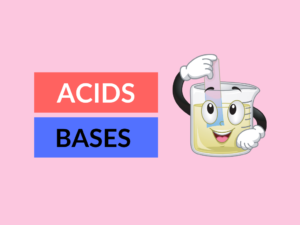HPLC vs. GC: Understanding Key Differences
Are you in a dilemma about which chromatography technique to use? High-Performance Liquid Chromatography (HPLC) and Gas Chromatography (GC) are both widely used techniques to separate and analyze complex mixtures of chemicals. However, they differ in several aspects of their working principle, application, and instrumentation. In this article, we’ll take an in-depth look at the differences between HPLC and GC to help you make an informed decision.
What is HPLC?
HPLC, as the name suggests, uses a liquid mobile phase to separate the sample components. The mixture is passed through a column packed with a stationary phase, which interacts selectively with different components to separate them. The components elute from the column based on their affinity to the stationary phase and are detected using a UV detector or other detectors.
Examples of HPLC
HPLC is used extensively in pharmaceutical, food, and environmental analysis.
Some examples of HPLC applications are:
– Analysis of pharmaceutical drugs and their metabolites
– Separation and quantification of food additives, vitamins, and amino acids
– Monitoring environmental pollutants and pesticide residues in soil and water
– Analysis of biological macromolecules like proteins and nucleic acids
What is GC?
GC uses a gaseous mobile phase to separate the sample components. The sample is injected into a column containing a stationary phase, typically a coated polymer or a solid adsorbent. The components separate based on their boiling point and vapor pressure, and the separated compounds are detected using a flame ionization detector or a mass spectrometer.
Examples of GC
GC has a wide range of applications, including:
– Analysis of volatile organic compounds (VOCs) in air, water, and soil samples
– Separation and quantification of fatty acids and lipids in food products
– Quantification of residual solvents in pharmaceuticals and other chemical products
– Monitoring impurities in petrochemical products and other industrial processes
Differences between HPLC and GC
The following table summarizes the key differences between HPLC and GC in different areas of chromatography:
| Difference Area | HPLC | GC |
| — | — | — |
| Mobile Phase | Liquid | Gas |
| Stationary Phase | Packed column | Coated polymer or solid adsorbent |
| Separation Mechanism | Affinity to stationary phase | Boiling point and vapor pressure |
| Sample Types | Non-volatile, polar and nonpolar | Volatile or semi-volatile, nonpolar |
| Injection Volume | µL range | mL range |
| Detector Types | UV, Fluorescence, Mass spectrometry | Flame ionization, Mass spectrometry |
| Resolution | Lower resolution | Higher resolution |
| Sensitivity | Lower sensitivity | Higher sensitivity |
| Applicability | Broad range of compounds | Limited range of compounds |
Conclusion
HPLC and GC are valuable analytical techniques that have unique advantages and disadvantages. The choice between the two techniques primarily depends on the type of sample, the compounds of interest, the required sensitivity, and the desired resolution.
Knowledge Check
1. What is the primary difference between HPLC and GC?
Answer: The primary difference is the mobile phase, with HPLC using liquid and GC using gas.
2. Which stationary phase is typically used in GC?
Answer: A coated polymer or a solid adsorbent is used in GC.
3. What types of detectors are commonly used in HPLC?
Answer: UV, fluorescence, and mass spectrometry detectors are commonly used in HPLC.
4. Which type of sample is suitable for GC?
Answer: Volatile or semi-volatile, nonpolar samples are suitable for GC.
5. Is HPLC or GC more sensitive?
Answer: GC is generally more sensitive than HPLC.
6. Which technique is suitable for the separation of proteins and nucleic acids?
Answer: HPLC is suitable for the separation of proteins and nucleic acids.
7. What is the range of injection volume in HPLC and GC, respectively?
Answer: HPLC injection volume is typically in the µL range, while GC injection volume is typically in the mL range.
8. Which technique has a broader range of applicability?
Answer: HPLC has a broader range of applicability than GC.
9. Which separation mechanism is employed in HPLC?
Answer: Affinity to stationary phase is the separation mechanism employed in HPLC.
10. In which industry is GC typically used for analysis?
Answer: GC is typically used for the analysis of impurities in petrochemical products and other industrial processes.
Related Topics
– Difference between HPLC and UPLC
– Pros and Cons of HPLC and GC
– How to choose the right chromatography technique for your analysis.


